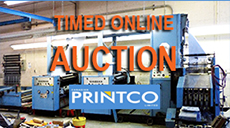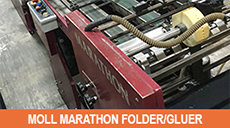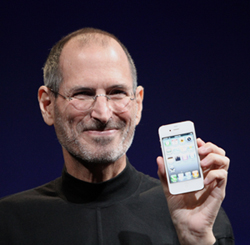
|
|
| Home › Articles › Here |
|

|
||||||||||||||||
| By: Nick Howard | Date: April 2016 | Contact the Author |
|||||||||||||||||
|
Go bigger in printing vernacular
still refers to the
luxury of larger job volume
and, as we know, the lithographic
process does not
have limitations on run lengths or increased
costs. There are no differing click
charges or maintenance fees for a litho
job of 2,000 sheets or one that is 200,000
sheets. Bigger just means better economics
for both the printer and client. Go better in today’s market can often refer to leveraging collateral print as a loss-leader to attract more valuable work, such as controlling a client’s full marketing campaign and providing them with direct links to their customers. This loss-leader approach often manifests itself in providing gang-run work like business cards or postcards. Better, of course, can also mean providing unique capabilities in print manufacturing like special effects with inks and coatings, or perhaps the now commonplace use of both digital and offset. Go home – Well, we know what that means. A growing portion of our industry considers this possibility regularly. It can mean an attempt to merge, but in many instances it signals that it’s time to look at new opportunities outside of the printing industry. We are not alone in considering this approach. Print is often viewed as the ultimate victim of digital communications, but the Internet and mobile computing have ravaged the manufacturing base of many industries.
Communications revolution It was less than 20 years ago that the mighty music industry made nothing but money. The ridiculous contracts, which even the biggest names in music had to sign, guaranteed riches beyond belief for the silent powers of Music Inc. If a percentage of say five percent royalty is agreed to, musicians were in line to lose half of that to deductions by the industry. Creation of album covers, production printing of albums, breakage (a certain percentage was deducted to cover theft and breakage of shipments) were just some of the fees an artist would see coming off their royalty payments. No wonder artists hated their record companies. How else could musicians have their music delivered, but through what was a quasi-monopoly? Then along came the Internet and revolutionary Websites like Napster. The end was near for the manufacturing monopolies of music, as artists found new routes to keep more of their money and music lovers could hold entire collections on a tiny smartphone. Consider the genius of Steve Jobs and how he changed the fortunes of so many industries. His foresight to know that the cell phone would become so much more and offer the world instant access to almost everything. The new iPhone 6 looks like an incredible communications tool.
Challenges remain Our piece of the communications industry, manufacturing and distributing print, has such a long legacy. Being centuries older than any other communications medium, however, does not mean a thing to Millennials or the worker generations to come, so we too are changing. The offset press appears as if it will continue on its downward trajectory as more inkjet and other digital processes come to market. Ten years from now there will be very few offset machines sold. Even today many printers look upon offset investment as a necessary evil and find ways to hold onto their current machines longer. The reason is simple. Technology has not changed a great deal from 2004 to the present day and shelling out $2 million plus for a new offset press when digital systems cost half as much and better fit current commercial shifts. The printing industry is in the middle of an era-defining communications transformation. Yes, we are aware of the increased closures and amalgamations. We see what is happening to the printed newspaper industry. But papers are still being printed, direct mail still arrives daily, magazines and promotional materials are in circulation and life seems relatively normal. Every day, however, more and more of what we print vanishes. It’s a jerky pattern but the decline is inevitable. Larger printers and trade shops grab more of the work because they can usually produce it cheaper than smaller traditional shops. Variable and versioned printing with digital technologies is growing exponentially and set to take more of the pie. Before Benjamin Franklin was in short pants, however, printers have howled against unfair competitor pricing, rising pulp prices and governmental legislation against everything from alcohol to by-products of the print process. There have also always been industry pioneers who see the future of print and drive it forward. They certainly do not attract the cult following of tech-giant CEOs, but paying attention to those in our industry who are prospering has never been more important. A few have taken steps to re-define our industry for the better, even by employing offset because they research market trends. Not since Gutenberg has our industry faced such challenges – Go big, go better or go home. |
|||||||||||||||||
Contact the Author |
|||||||||||||||||
|
|||||||||||||||








